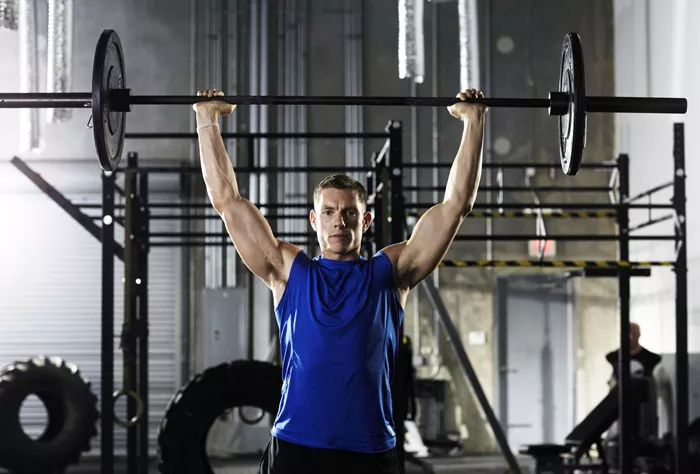The overhead press is a fundamental exercise in strength training. It primarily targets the shoulders, triceps, and upper chest. The movement involves lifting a weight from shoulder height to above the head. This exercise is essential for building upper body strength and enhancing athletic performance. It requires both technique and stability, making it an ideal compound exercise for developing power and muscle mass.
The Benefits of the Overhead Press
There are several advantages to incorporating the overhead press into your workout routine. These include:
- Increased Shoulder Strength: The overhead press targets the deltoid muscles, helping to improve shoulder strength and stability.
- Enhanced Triceps Development: As you press the weight overhead, the triceps are activated, leading to stronger arms.
- Core Engagement: The press demands core stability to keep the body upright and balanced, which strengthens the abdominal muscles.
- Improved Posture: This exercise helps improve posture by strengthening the upper body muscles that support the spine.
Proper Technique for the Overhead Press
Executing the overhead press with proper form is crucial to avoid injury and maximize effectiveness. Here is a step-by-step guide:
- Start Position: Stand with your feet shoulder-width apart. Hold the barbell or dumbbells at shoulder height with your palms facing forward.
- Grip: Your hands should be placed slightly wider than shoulder-width. Keep your elbows just in front of the barbell.
- Press: Push the barbell or dumbbells straight overhead. Engage your core and squeeze your glutes to maintain a neutral spine.
- Lockout: At the top of the movement, your arms should be fully extended with the weight directly over your head.
- Lowering: Lower the weight slowly back to shoulder height, maintaining control throughout the movement.
Common Mistakes to Avoid
While performing the overhead press, it’s important to avoid certain mistakes that can lead to injury or inefficient results:
- Arched Lower Back: A common mistake is arching the lower back excessively, which can strain the spine. Keep your core engaged to avoid this.
- Partial Reps: Avoid only lifting the weight halfway. Full range of motion ensures maximum muscle activation.
- Elbow Position: Keep your elbows in front of the barbell, not flaring out to the sides, to maintain proper alignment.
Incorporating Overhead Press into Your Training
The overhead press can be incorporated into various workout routines. It can be done as part of a push day, where exercises like the bench press and triceps extensions are included. It can also be included in a full-body workout to target multiple muscle groups.
Overhead Press for Strength Training
For those looking to build maximal strength, focus on lower reps and higher weights. This means performing 3–5 sets of 3–5 reps with a challenging weight that allows you to complete the reps with good form. Rest periods should be between 2–3 minutes to allow for full recovery between sets.
Overhead Press for Hypertrophy
If your goal is muscle growth (hypertrophy), aim for 3–4 sets of 8–12 reps. Use a moderate weight that allows you to complete the reps with proper form, but still challenges you by the last few reps. Rest periods should be around 60–90 seconds.
Overhead Press and Anaerobic Exercise
The overhead press can be classified as an anaerobic exercise. It relies on strength and power, which are developed through anaerobic training. For those looking to enhance their strength and muscle mass, focusing on anaerobic exercise can be highly beneficial.
Variations of the Overhead Press
There are several variations of the overhead press that can be used to target the muscles in different ways:
- Dumbbell Overhead Press: Using dumbbells allows for a greater range of motion and helps address muscle imbalances.
- Arnold Press: This variation involves rotating the palms as you press the weights overhead, engaging more of the deltoid muscles.
- Seated Overhead Press: Performing the press seated takes away the need for stabilizing the lower body, focusing the effort entirely on the shoulders.
How the Overhead Press Fits into Your Workout Routine
Whether you’re aiming for strength, hypertrophy, or endurance, the overhead press is a versatile exercise that can be adapted to various training styles. If you’re doing cardio workouts, it can be beneficial to combine strength exercises like the overhead press with cardiovascular training to create a balanced fitness regimen.
Conclusion
The overhead press is an essential exercise for building upper body strength and enhancing overall fitness. By mastering proper form, avoiding common mistakes, and incorporating it into your workout routine, you can significantly improve your strength and muscle development. Whether you’re a beginner or an experienced lifter, the overhead press is a must-do exercise in any well-rounded training program.

